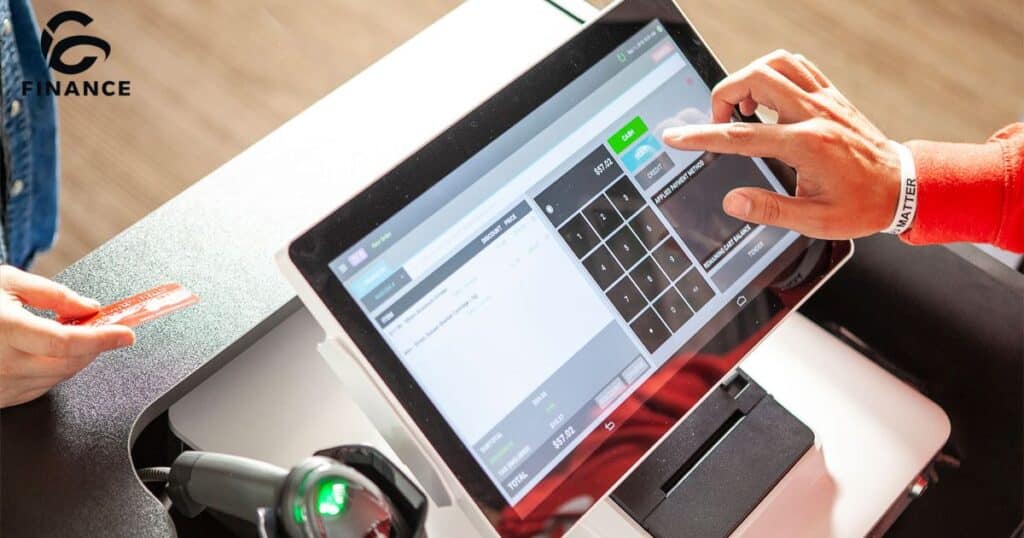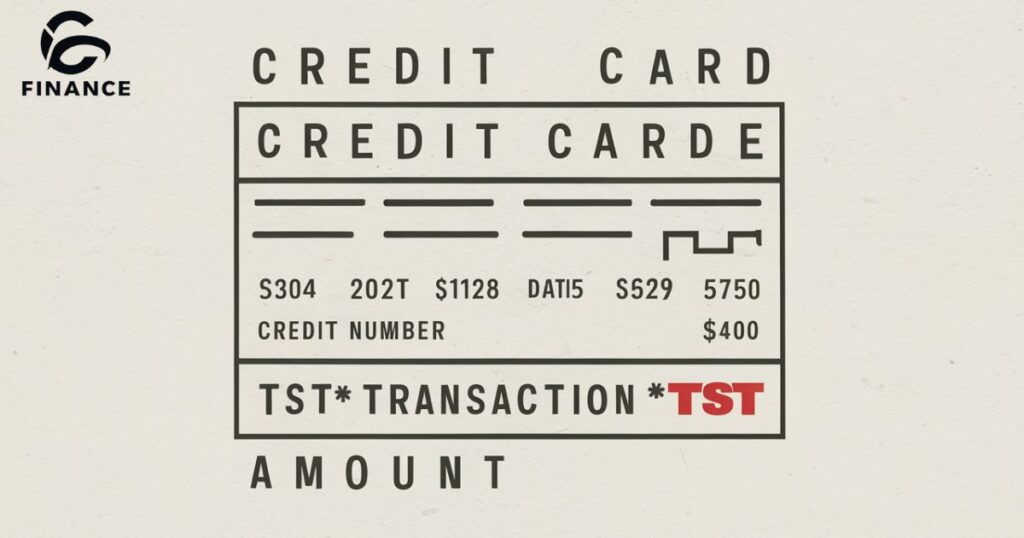Have you ever noticed a charge on your credit card statement with the cryptic code “TST*” and wondered what it means? If so, you’re not alone. TST* is a common merchant descriptor that often appears on statements when you make a purchase at a restaurant or retail store using a point-of-sale (POS) system.
In this comprehensive guide, we’ll demystify the meaning of TST*, explain why it shows up on your statement, and address any concerns you might have about these types of charges.
What is a TST charge?
A TST charge on your credit card statement typically indicates a transaction processed through a payment processor called Toast. This acronym stands for “Toast, Inc.,” a leading cloud-based restaurant technology platform used by many businesses in the foodservice and hospitality industries.
What Is Toast?
Toast is a popular all-in-one POS system designed specifically for restaurants, food trucks, and other food service establishments. It combines various tools and features such as menu management, payment processing, online ordering, payroll, and more into a single platform.
When you pay at a restaurant or store that uses Toast’s POS system, the charge on your statement will often appear as “TST*” followed by the merchant’s name.
Example:
Copy codeTST* Tasty Bites Cafe $25.67
Toast’s platform is built to streamline operations for busy restaurants and eateries. It allows staff to easily update menus, process orders and payments, track inventory levels, and manage payroll – all from a centralized system. This integrated approach aims to increase efficiency, reduce errors, and provide valuable insights into sales data and customer behavior.
According to Toast’s website, their platform is used by over 62,000 restaurants across the United States and beyond. Some well-known restaurant chains that use Toast include:
- Jamba Juice
- Buddy V’s Ristorante (Buddy Valastro’s restaurant)
- Sunny Street Café
- Westville
So if you’ve dined at any of these establishments (or many other popular eateries), you’ve likely encountered a TST* charge on your statement.
What Is a Point of Sale System?

A point of sale (POS) system is a combination of hardware and software used by businesses to process customer transactions, track sales, and manage inventory. Common POS components include:
- Computer or tablet
- Receipt printer
- Cash drawer
- Barcode scanner
- Payment terminal for accepting credit/debit cards and mobile wallets
POS systems are essential for modern businesses, streamlining operations and providing valuable insights into sales data and inventory levels.
In the restaurant industry specifically, a robust POS system like Toast can offer advanced features such as:
- Tableside ordering and payment processing
- Kitchen display systems for relaying orders
- Online ordering integration
- Loyalty program management
- Detailed sales reporting and analytics
By consolidating these functions into a single platform, Toast aims to create a seamless, efficient experience for both restaurant staff and customers.
What Is a Payment Processor?
A payment processor is a company that handles the behind-the-scenes work of securely transmitting transaction data between a merchant’s POS system and the customer’s credit card network or bank.
Toast partners with various payment processors to facilitate smooth credit and debit card transactions for its clients. Some of the major payment processors that work with Toast include:
- Chase Paymentech: A leading payment processor owned by JPMorgan Chase & Co.
- Worldpay: A global payments company serving over 1 million merchants worldwide.
- TSYS: A payment solutions provider offering services like issuer and merchant processing.
These payment processors act as intermediaries, securely transmitting sensitive payment data from the merchant’s POS terminal to the appropriate card networks (Visa, Mastercard, etc.) for authorization and settlement.
By partnering with established payment processors, Toast can offer its restaurant clients a reliable, secure way to accept various payment methods from their customers.
Why Does Toast Put TST on Credit Card Statements?
When you make a purchase at a business using the Toast POS system, the transaction is routed through Toast’s payment processing platform. Toast uses the “TST*” descriptor code to identify these charges on your credit card statement, making it easier for you to recognize where the charge originated.
This is a common practice among payment processors and POS providers, as it helps customers quickly identify transactions from specific merchants or platforms.
Using a standardized descriptor code like TST* serves two main purposes:
- Merchant Identification: The code immediately alerts you that the charge was processed through the Toast platform, rather than directly through the merchant’s individual payment terminal.
- Fraud Prevention: Recognizable descriptors on statements help consumers more easily spot potential fraudulent charges from unfamiliar sources.
So while the TST* code might seem cryptic at first glance, it’s actually an industry standard designed to provide transparency and security for cardholders.
How Does TST* Appear on Credit Card Statement?

The TST* charge will typically appear on your statement as “TST*” followed by the transaction amount.
Example:
Copy codeTST* Tasty Bites $45.67
In this example, you can see that the charge was processed through the Toast platform on behalf of a merchant called “Tasty Bites,” with a total amount of $45.67.
Sometimes, additional details like the merchant’s location or order number may also be included in the line item description:
Copy codeTST* Tasty Bites Cafe #12345 NYC, NY $32.15
This extra information can be helpful for identifying specific transactions, especially if you frequent the same restaurant or retailer multiple times.
It’s worth noting that the formatting and level of detail provided in these descriptions can vary slightly depending on your credit card issuer and their particular statement reporting standards.
Recommended This Post: Fintechzoom GM Stock Forecast: Future Millionaires
What Is the Meaning of TST * in Banking?
In the banking and financial world, TST* is simply a merchant descriptor code used by the payment processor Toast, Inc. It does not carry any special meaning beyond indicating that the charge was processed through Toast’s platform on behalf of a merchant client.
These descriptor codes are standard practice and help both customers and financial institutions identify the source of transactions more easily. Other common descriptor codes you might see include:
- UBER
- AMZN (Amazon)
- PAYPALMERCHANT
- GRUBHUB
While the specific codes can seem a bit cryptic, they serve an important purpose in helping cardholders and banks quickly recognize where charges are coming from.
Should I Worry About a TST Credit Card Charge?
In most cases, no. A TST* charge on your statement is perfectly normal and simply means you made a purchase at an establishment that uses the Toast POS system.
However, if you don’t recognize the charge or suspect fraudulent activity, it’s always a good idea to contact your credit card company for clarification. They can investigate the charge and provide more details about the merchant and transaction.
“TST* charges are common and generally nothing to worry about, but it’s always wise to review your statements carefully and report any suspicious activity to your card issuer.” – Financial Advisor Jane Doe
Here are a few tips for addressing any concerns about a TST* charge:
- Review the merchant name and location details provided in the charge description to see if you can recall making a purchase there.
- Check your receipts or payment apps (like Apple Pay or Google Pay) for records of recent transactions that might match the charge amount.
- Call the customer service number on the back of your credit card to speak with a representative about the charge. They can look into the details and potentially reverse any unauthorized or fraudulent charges.
While TST* is a legitimate descriptor code used by Toast, being vigilant about monitoring your statements is always a smart financial practice.
Understanding Pending Charges on Credit Cards
It’s worth noting that credit card charges often appear as “pending” transactions before they are fully processed and posted to your account. Pending TST* charges may initially show up on your statement with a different descriptor code or appear slightly different from the final posted charge.
For example, a pending charge might look like:
Copy codeTOAST INC TST* 12345 $25.99
Once the transaction is fully processed, it will typically update to a more readable format with the merchant name:
Copy codeTST* Tasty Bites Cafe $25.99
Financial institutions do this to provide an early notification of the charge while the details are still being finalized behind the scenes. It’s essentially a temporary placeholder until the full transaction information can be populated.
While seeing these temporary “pending” charges on your statement might seem confusing at first, don’t worry – they will be updated and replaced by the complete charge details within a few days in most cases.
Case Study: How Toast Helped a Local Cafe
Let’s take a look at how the Toast POS system benefited a local cafe called “Sunny Side Up.”
Before implementing Toast, Sunny Side Up relied on an outdated cash register and a separate payment terminal for credit card transactions. This made things inefficient and prone to errors, with separate systems for tracking sales and inventory.
After switching to Toast, the cafe owners were able to:
- Streamline ordering and payment processes with an all-in-one system
- Manage menus and pricing more easily
- Track real-time sales data and inventory levels
- Accept online orders and payments through Toast’s integrated platform
- Save time and reduce errors with automated reporting and analytics
The owners of Sunny Side Up were thrilled with the operational improvements and growth they saw after adopting the Toast system. While TST* charges were new to some of their customers initially, the cafe was able to educate patrons on what the descriptor meant and why it appeared on their statements.
“Implementing Toast was a game-changer for our business,” said Sarah, co-owner of Sunny Side Up. “Not only did it make our day-to-day operations so much smoother, but we were also able to start offering online ordering for the first time, which was huge during the pandemic.”
Overall, the benefits of using a modern, integrated POS solution like Toast far outweighed any temporary confusion over the TST* charge descriptor.
Real Customer Reviews of Toast

But don’t just take it from one cafe owner – Toast has received rave reviews from many businesses across the restaurant and foodservice industries:
“Toast has allowed us to seamlessly navigate the new era of hospitality. With its user-friendly interface and robust functionality, we’ve been able to streamline operations, deliver exceptional guest experiences, and drive revenue growth.” – Michael M., General Manager of a popular burger joint
“As a multi-unit operator, Toast has been instrumental in helping us maintain consistency and efficiency across all our locations. The real-time reporting and inventory management capabilities are invaluable.” – Jessica T., Owner of a regional pizza chain
“The Toast team has been incredibly supportive throughout the entire implementation and training process. Their customer service is top-notch, and they’re always introducing new features to help our business thrive.” – David R., Chef and Owner of a farm-to-table restaurant
With a 4.7/5 rating on G2 (a popular software review platform), it’s clear that Toast is highly regarded by many in the industry for its user-friendly design, robust feature set, and reliable service.
Avoiding Credit Card Statement Confusion
While TST* charges from Toast are perfectly legitimate, it’s understandable that seeing unfamiliar codes or merchant descriptors on your statement can sometimes raise concerns – especially if you’re not already familiar with the POS platform being used.
To help avoid any confusion or unnecessary worries, there are a few things both merchants and consumers can do:
For Merchants:
- Educate staff and customers about the merchant descriptor codes that will appear on statements for charges processed through your POS system.
- Include clear details on receipts, order confirmations, and your website explaining how charges will be labeled.
- Respond promptly to any customer inquiries about charges on their statements to provide clarity and reassurance.
For Consumers:
- Pay attention to merchant details in the charge description to match it up with places you’ve made legitimate purchases.
- Review receipts and payment apps to cross-reference and verify recent transactions.
- Call your credit card company if you have any concerns about a specific charge – they can investigate further.
- Stay informed about common merchant descriptor codes used by popular payment processors and POS platforms like Toast.
A little proactive communication and education can go a long way in preventing unnecessary stress or confusion when those descriptors appear on your statement.
The Future of Integrated POS Systems
As technology continues to evolve, integrated POS solutions like Toast are becoming increasingly popular across a wide range of industries – not just restaurants and food service.
From retail stores to salons, many businesses are recognizing the benefits of having an all-in-one system to handle payments, inventory, reporting, and customer management with greater efficiency.
And as adoption of these platforms grows, consumers can expect to encounter more unique merchant descriptor codes on their statements in the coming years.
However, the underlying principle remains the same – these codes are designed to provide transparency into where charges are originating, while still allowing for discretion and fraud prevention.
As long as merchants and payment processors are clear about how charges will appear, and consumers remain vigilant about monitoring their statements, issues of confusion or concern over these descriptor codes can be easily avoided.
Conclusion
The TST* code on your credit card statement is nothing to worry about – it simply indicates that your purchase was processed through the popular Toast POS system used by thousands of restaurants and food service businesses.
By understanding the meaning behind common merchant descriptor codes like TST*, you can easily identify where charges originate and keep better track of your spending. If you ever have lingering concerns about a specific charge, don’t hesitate to contact your credit card company for assistance. They can provide more details and investigate any potentially fraudulent activity.
With integrated POS platforms continuing to grow in popularity, getting familiar with these types of descriptor codes will only become more useful over time. Embracing technology and maintaining open communication between merchants, payment processors, and consumers is key to avoiding confusion and keeping the purchasing experience as smooth as possible.
So the next time you see “TST*” on your statement, you’ll know exactly what it means – and hopefully appreciate the enhanced operational efficiencies it represents for the businesses you frequent.

Howdy, editor at FinanceEon.com, brings over a decade of financial journalism experience. He ensures accuracy and insightful analysis, guiding a team on market trends and investment strategies.







